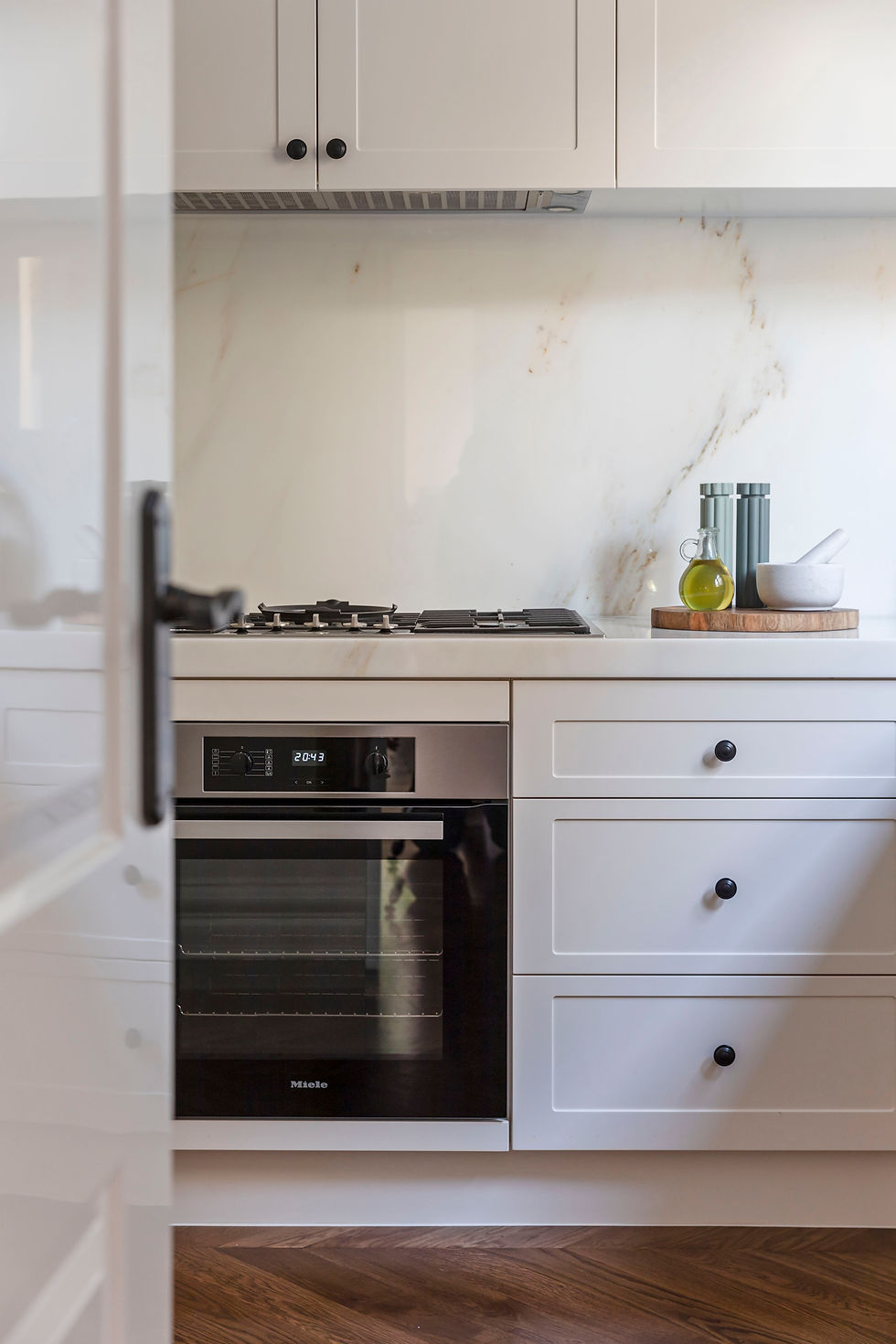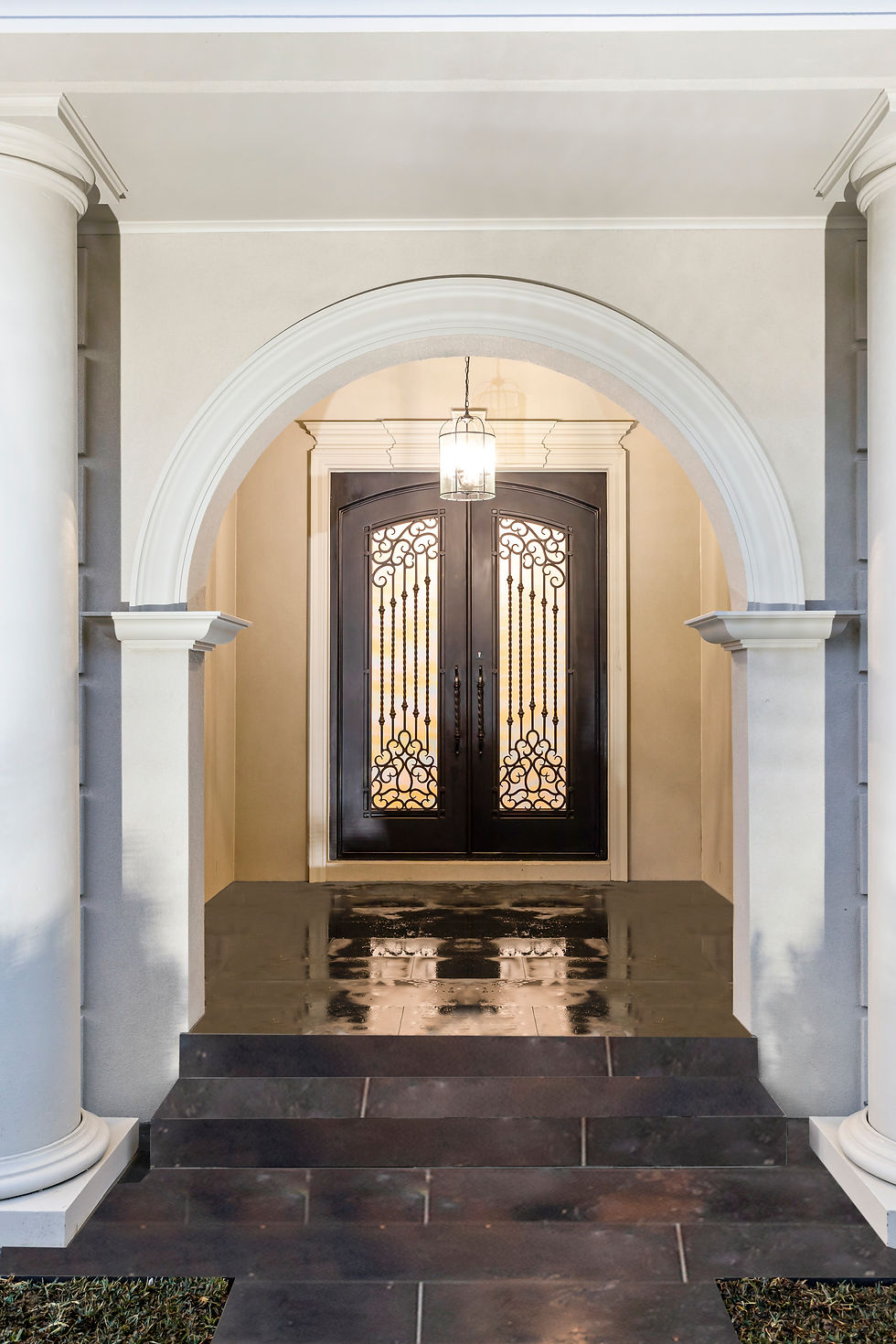Architectural Design: Building Beauty, Not Just Equity
- Carmel Homes
- Aug 11
- 5 min read
Updated: Aug 14
Written by Adib Adely, Director of Carmel Homes

1. Why We Can’t Just Measure Architecture in Money
In the building industry, we hear it constantly: “Work with an architect and you’ll add thousands to your property value.” Sometimes it’s even turned into exact figures, $1 spent in design gives you $11.40 back, or examples like the Sydney Opera House generating billions for the Australian economy. These numbers are neat and persuasive.
And yes, they can be true. For many homeowners, especially in a hot property market like Melbourne, hearing that a renovation or rebuild can boost your home’s value is reassuring. It frames the decision as financially responsible, not indulgent.
But here’s the problem: if money becomes the only lens we use to judge architectural design, we end up reducing something complex and meaningful into a commodity. Architecture becomes less about shaping spaces for living and more about maximising resale value. That approach might make sense for quick flips, but it misses the heart of why we build in the first place.
From our design and build perspective, the financial side is important, it’s a major investment, and clients deserve to feel confident it’s worth it. Whether it’s a knockdown rebuild in the suburbs, a bespoke home designed for a tricky sloping block, or a bold modern design in the inner city, budgets matter. But so do things that don’t appear in a spreadsheet: how sunlight moves through a room, the way a garden feels like an extension of your living space, the connection between a home’s form and the land it sits on.
These are the things that turn a house into a home, and they don’t have a neat dollar figure attached.

2. Architecture Is More Than Just “A Building”
Architecture isn’t simply about shelter or square metre counts. It’s building infused with ideas. Throughout history, the definition of “good” architecture has shifted, shaped by culture, technology, and style.
There were times when the rules were clear, Gothic churches, Art Deco theatres, Bauhaus housing blocks. These styles had shared principles that made it easy to identify what was “good” within their framework. Modernism disrupted that order, bringing in international influences and rejecting fixed styles altogether. Postmodernism pushed the boundaries further, opening the door to experimentation, humour, and eclecticism.
Now? We live in a time where the rules are more fluid than ever. Awards are still given, but the criteria are often vague, and the sheer number of categories can make it feel like everyone gets a ribbon.
Into this uncertainty, sustainability has stepped in as a unifying measure. Factors like energy efficiency, low-carbon materials, and landscape design that works with the environment are now seen as essential. This is a good thing, environmental responsibility is non-negotiable in our era. From water-sensitive planting in a Melbourne backyard to reusing bricks from a demolished wall, sustainable thinking is a normal part of every custom home builder conversation.
But sustainability alone isn’t enough. It avoids the “elephant in the room”: beauty. Not beauty in the sense of surface decoration, but in the way a design feels inevitable, like it belongs exactly where it is. A well-considered modern design home on a sloping block can be sustainable, functional, and still be a joy to look at and live in.

3. Rediscovering the “Cultivated Eye”
One of the most rewarding moments in our work is seeing clients develop what designers sometimes call the “cultivated eye.” At the start of a project, most people focus on the practical: How many bedrooms? What’s the cost per square metre? Where’s the storage going? These are all important, but they’re only part of the picture.
As the design process unfolds, clients start noticing smaller things, the way light falls in the living room at 4 pm, how a view lines up perfectly through a window, how landscape design softens the transition from indoors to outdoors. These moments often become the most cherished parts of the finished home.
The cultivated eye isn’t innate, it’s learned. And it’s not about imposing a single “correct” taste; it’s about understanding how design choices affect how you feel in a space. Avoiding that conversation entirely leads to sameness, and sameness is the enemy of memorable design.
Take a knockdown rebuild in Melbourne’s eastern suburbs. Initially, the conversation might be about maximising footprint and ensuring a certain number of rooms. But as ideas develop, the priorities shift: perhaps orienting the living area to capture northern light, or designing a covered deck that blurs the line between indoor and outdoor living. On a sloping block, what begins as an engineering challenge can become an opportunity for split-level spaces, elevated views, and gardens that unfold in layers.
These aren’t just “nice-to-haves.” They’re the qualities that make a house worth coming home to, and they can’t be expressed as a return-on-investment percentage. A custom home builder who understands these subtleties helps guide them into the design without forcing them.

4. The Decisions That Really Define a Project
Every building project is the sum of countless decisions. Some are big and obvious: the cladding, the roofing, the kitchen layout. Others are almost invisible, but they shape your experience every
The exact height of a window sill so you can see the garden from your favourite chair.
The way a hallway widens near the entrance to create a sense of welcome.
The positioning of a skylight so it catches the first light in winter.
On a sloping block, these decisions are magnified. Levels, retaining walls, and landscape design all need to work together so the house feels anchored, not imposed. Sometimes this means leaving part of the slope untouched to preserve native plants. Other times, it’s about designing steps that become an architectural feature instead of a compromise.
The difficulty with reducing architectural design to numbers is that it ignores these small, human decisions. They don’t show up in valuations, but they’re often the reason you fall in love with a home. And when we focus too much on financial metrics, we risk erasing them altogether.
This is where the cultivated eye is crucial, it’s what helps us decide when to spend a little extra, when to pare something back, and when to let the land or light lead the design. And in the context of design and build, that’s where the real artistry lies.

It’s tempting to talk about architecture in terms of economic benefit because numbers are easy to compare. But that story is incomplete. A home’s value can’t just be calculated in resale price; it’s also in the day-to-day experience of living there.
Great design and build projects aim to create spaces that are functional, sustainable, and beautiful. A knockdown rebuild that replaces a tired weatherboard with a light-filled family home is more than an investment, it’s a fresh start. A custom home builder project on a sloping block that works with the contours of the land isn’t just clever engineering, it’s respect for the site.
When we talk about beauty, we’re talking about truth: to materials, to place, to the people who will live there. That’s what makes a modern design timeless instead of trendy. And it’s why the real measure of architectural design isn’t found in a financial report, it’s found in the way you feel when you step through the door, year after year.








Comments